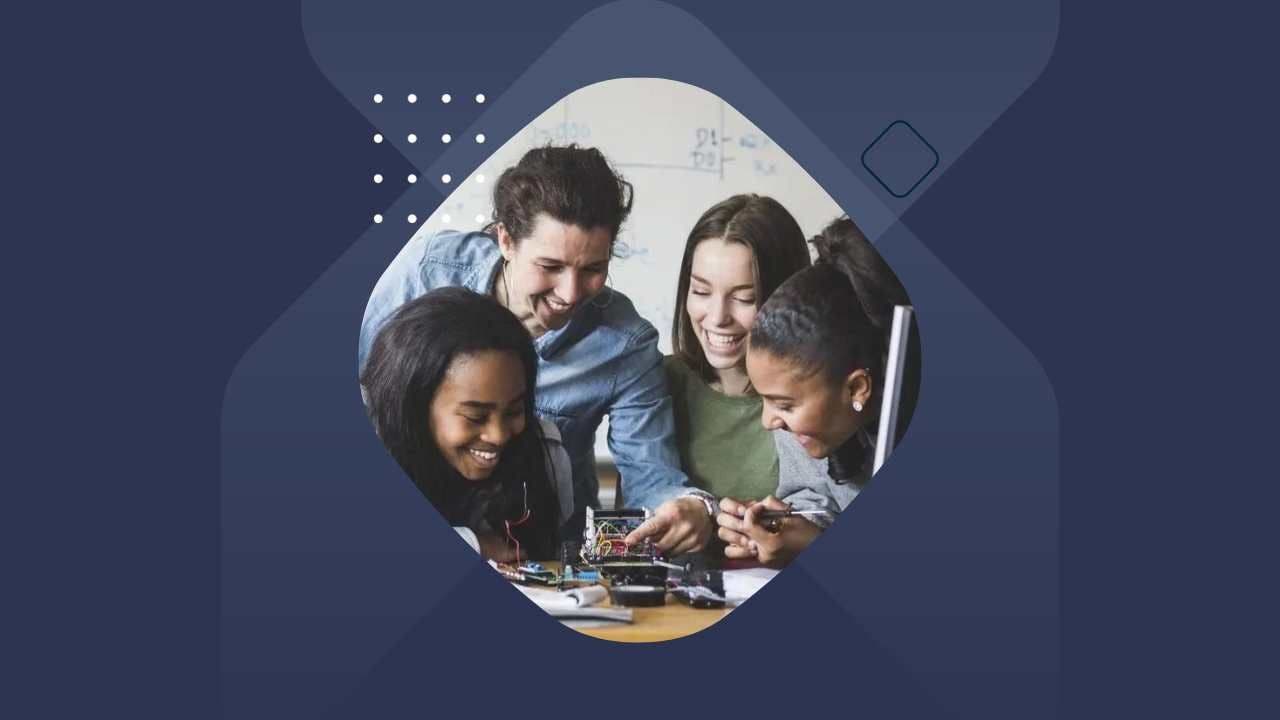Far too often, we use language like “really good” or “high-quality” without any attempt to calibrate those terms. Even worse, sometimes we, as instructional leaders, don’t really understand what classroom technology integration can look like when it is done well. So when we’re observing or mentoring teachers, tech is treated like a checkbox.
“Really Good” Classroom Technology Integration
Flash back to 2006. I’m fresh out of college, in my first teaching position, and ready to turn the world upside down. Our school recently installed our first interactive whiteboards. I don’t mean the fancy touchscreen large-format displays we have today. These were the old plastic boards with a projector on a cart, and the kids would bump the cart every three minutes, then you’d have to recalibrate the board… As I recall, they cost about a million dollars and required at least that many cables to make them work.
That’s me in the back row, standing in front of my state-of-the-art whiteboard, looking only a few years older than my students. My principal came in to do an observation while I was doing examples for my class on how to factor trinomials on the board. Later that day, I caught up with my principal and he gave me some pointers on how to do some things differently – and one really interesting compliment. He said, “…and by the way, I LOVED the way you were integrating technology today. That was really great!”


Is Classroom Technology Integration Sometimes Nothing More Than Using Digital Ink?
Now, I reflect on that scenario and ask myself, “What was so great about that technology integration?” I was literally just writing on the board. I could have been just as effective with a piece of chalk, or chisel and hammer on the side of a cave. It was nothing more than digital ink on a plastic board, and we called it “really great.” Even with all that said, I get it. My principal likely walked into 15 classrooms that day and saw only one with the interactive board being used. And for him, it was a breath of fresh air to even see the thing in use. But with a little hindsight, I think we can all agree that “really good” is not a great description for that particular form of classroom technology integration.
Classroom Technology Integration is much more than a checkbox
So let’s revisit the title of this blog. What do we mean by “high-quality” technology integration? My 2006 example is only funny because it’s still true today. Far too often, we use language like “really good” or “high-quality” without any attempt to calibrate those terms. Even worse, sometimes we, as instructional leaders, don’t really understand what technology integration can look like when it is done well. So when we’re observing or mentoring teachers, tech is treated like a checkbox. Is it used or not? This happens with little or no attention given to how that technology is contributing to the learning experience.


4 Levels of Tech Integration with SAMR
Let’s fix this together right now. Fortunately for us, there is a commonly accepted measuring stick for this kind of thing called the SAMR model. The SAMR model has been around for a while, long enough to have its share of criticism. I agree, there are other more detailed models out there that attempt to do the same thing. However, a lot of people (me included) are drawn to the SAMR model for its simplicity. In the SAMR model, there are four levels of technology integration: Substitution, Augmentation, Modification, and Redefinition.
Substitution and Augmentation – Modernizing Traditional Methods with Added Functionality
Substitution and Augmentation are similar. With Substitution, we are integrating technology in a way that is a pure substitution for a more traditional method. An example could include using digital ink on an interactive whiteboard rather than chalk. Augmentation is still using technology as a direct replacement, but with added functionality. Staying with our whiteboard example, imagine using line and shape tools in the software in a geometry lesson. We’re still using the whiteboard as a replacement for the chalkboard, but we’re at least pulling in some functionality from the software.
Modification as a task redesign
Next, we have Modification and Redefinition. Modification is said to have “significant task redesign.” We’re no longer simply subbing in tech for some more traditional method. Instead, the learning experience is significantly different because of the technology usage. Imagine now that we start pulling in video clips and images into the whiteboard, we include hyperlinks to websites, and we include more apps such as Pear Deck or EdPuzzle. This learning experience is significantly different and is therefore considered Modification on the SAMR model.
Redefinition – Creating a New Learning Experience With Classroom Technology
Redefinition is the next and highest step. At this level, we’re creating a learning experience that cannot function without technology. Picture a remote student who is invited to take control of the software from home to participate in class, or, with the click of a button, sending a recorded whiteboard lesson to your learning management system to accommodate IEPs. This kind of learning experience is simply not possible without the use of technology.
Here’s the takeaway: SAMR is a great, easy-to-memorize model that provides some much-needed clarity when we’re describing technology-infused learning. Personally, I live by this model and we’ve adopted it as our measure of technology integration at Trafera, as well. I encourage you all to put this model into practice in your own teaching and leading. If you’re in a leadership role, get in the habit of using SAMR to provide feedback. Avoid lazy, subjective language like “really good” when you’re coaching teachers. If you’re in the classroom, use SAMR as a self-reflection tool. Remember this – S and A are not bad! SAMR does not distinguish between “good” and “bad.” These levels of technology integration have their place and we should not be ashamed to see them in our instructional practices. However, there is more, and when it makes sense to reach for that next level, we can use M and R to explore ways to truly transform learning.


